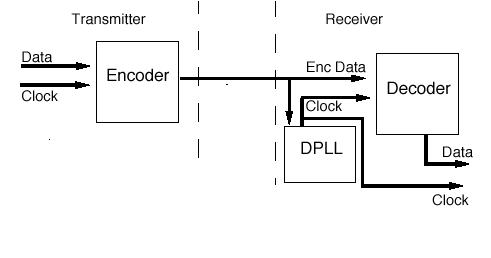Synchronous Transmission:- Synchronous transmission is a method of data communication that requires the source and destination to synchronize their clocks together. This synchronization of the clocks can occur externally to the data information or be incorporated with the data information. There are two types of synchronous data transmission (or communication):
* Externally clocked synchronous transmission
* Internally encoded synchronous transmission
The advantage to having the clocks synchronized is that longer blocks of data can be sent without loss of synchronization. Less overhead is required for the amount of data sent. In asynchronous transmission, there are 3 to 4 bits of overhead (start, stop, parity bits) sent with each character of data (7 to 8 bits). The start and stop bits were used to identify the beginning and end of transmission.
Asynchronous Transmission:-The asynchronous communication technique is a physical layer transmission technique which is most widely used for personal computers providing connectivity to printers, modems, fax machines, etc. The most significant aspect of asynchronous communications is that the transmitter and receiver clock are independent and are not synchronised.
In fact, there need be no timing relationship between successive characters (or bytes of data). Individual characters may be separated by any arbitrary idle period.
--------------------------------------------------------
Human do error, please email:- webmaster@piyadas-world.com if you find any. Please visit http://www.piyadas-world.com for more resource.
Explain synchronous and asynchronous transmission
Posted by Arafat | 1:33 PM | Transmission | 0 comments »
Subscribe to:
Post Comments (Atom)



0 comments
Post a Comment